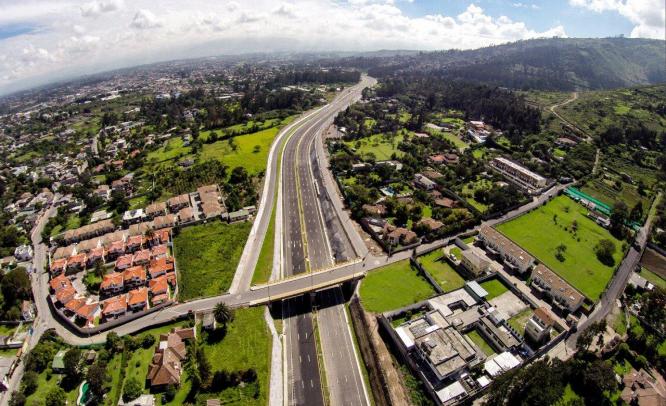Construtora Norberto Odebrecht, which was in charge of the construction of both phases, has won IFM’s Best Infrastructure Development Project Ecuador 2015
December 15, 2015: Ruta Viva, the highway that connects Ecuador’s capital city to two adjacent valleys, grew out of the pressing need to improve traffic circulation in the Metropolitan District of Quito, which is home to 15% of Ecuador’s total population of approximately 16 million. This major infrastructure project offers a modern, well-designed construction solution that benefits some 200,000 people in the project’s area of influence. It has not only had a positive impact on more efficient traffic patterns but also created new business opportunities for tourism and other services.
Because of these impressive outcomes, the Construtora Norberto Odebrecht, which was in charge of the construction of both phases of Ruta Viva, has now won an International Finance Magazine Award in the category “Best Infrastructure Development Project Ecuador 2015”. This award recognises infrastructure projects that make a difference, offer added value with the highest standards of performance and innovation.
Ruta Viva connects Quito to the new Mariscal Sucre International Airport located in Tababela. It now serves as the primary route to the airport. Its implementation has reduced the average travel time between the city and the airport to approximately 45 minutes. That trip previously took as long as an hour and a half.
In addition, Ruta Viva has become an essential link to the parishes of Cumbayá, Tumbaco, Puembo, Tababela, Checa, Pifo, Yaruqui and El Quinche, as well as to other cantons and provinces in the eastern part of the country. Earlier, the Interoceanic Avenue was the main route connecting Quito to population centres in the Valley of Tumbaco, whose rapid urbanisation in recent years had led to increasingly higher levels of traffic and frustrating congestion, with more than 50,000 vehicles per day.
Construction of Ruta Viva began in 2012 and ended in December 2014, with the inauguration of the second phase of the project. This highway covers a total of 11.55 km, with three lanes in each direction, and also includes five interchanges that make it possible to organise vehicle flow along the way. It also complies with the most stringent safety standards. In the second, wider section of the highway, two service lanes were included on each side to provide easier access to neighbouring population centres and facilitate public transportation options.
Ruta Viva was able to rely on funding from CAF (the Spanish acronym for the Andean Development Corporation) – Development Bank of Latin America.
This important project’s benefits have not only included the immediate decongestion of the Interoceanic Avenue by at least 50%, but also promoted and boosted the district’s production and social development.

